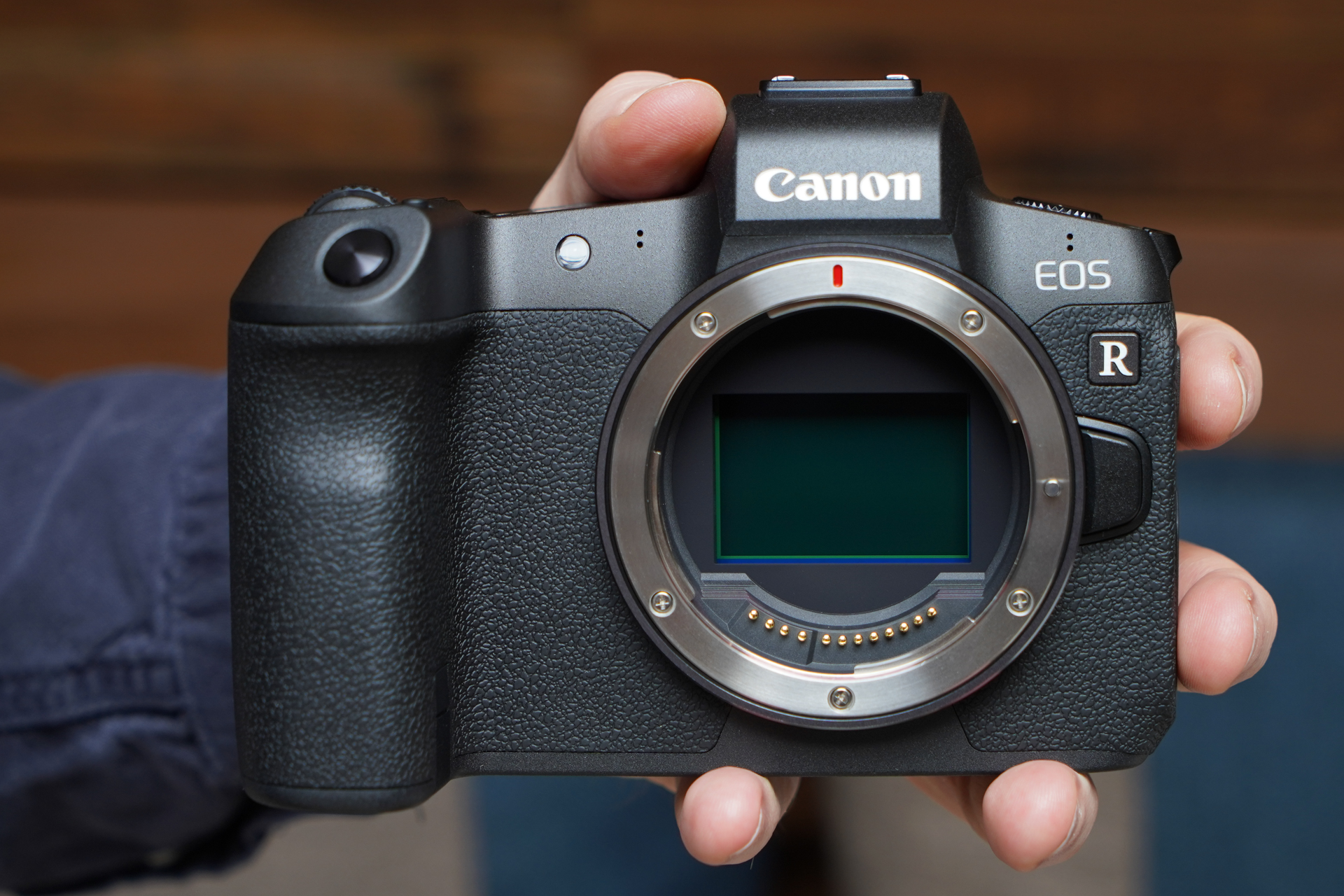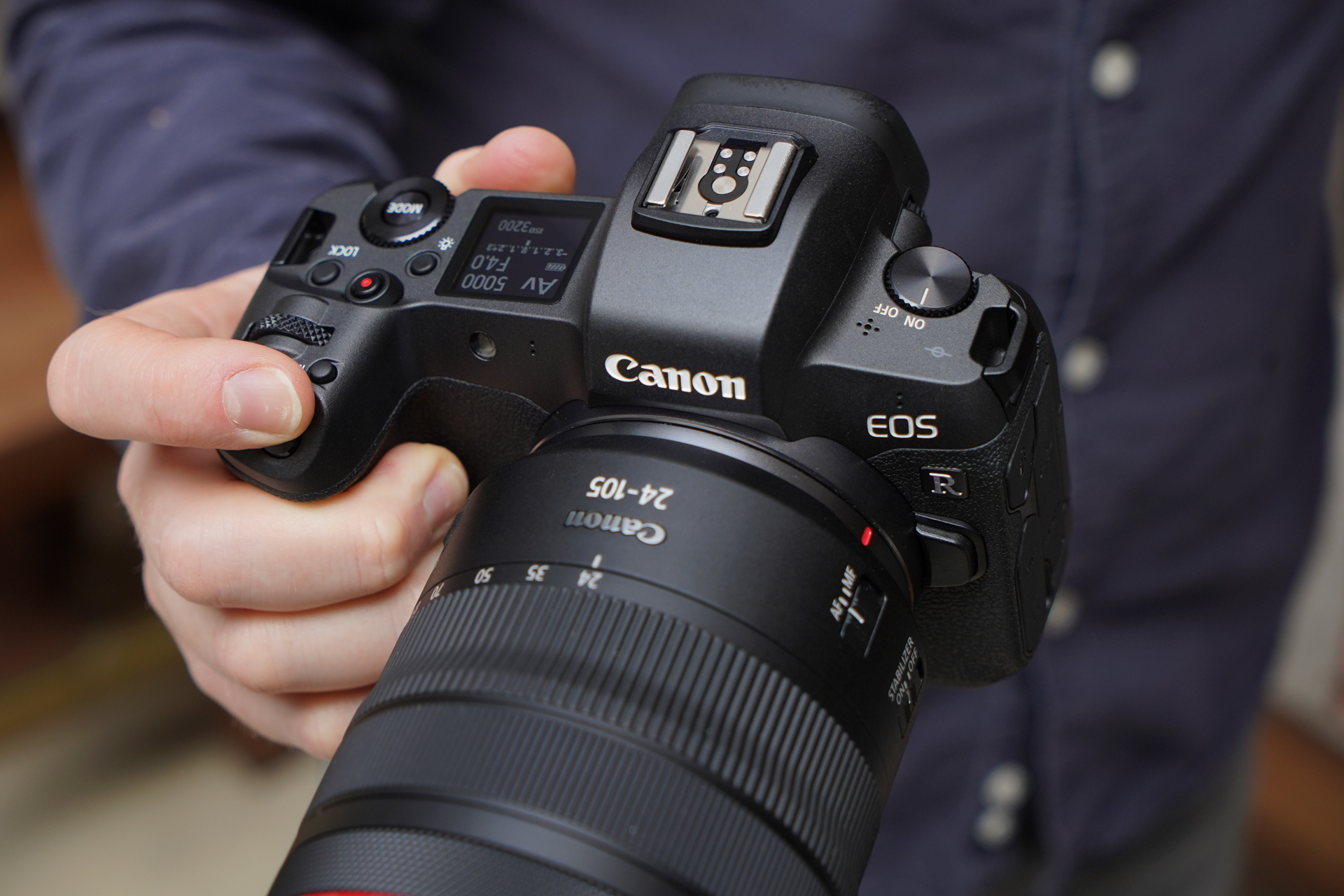Canon's latest EOS R is now finally with us. Expectations were already high, and these only rose following Nikon's launch the other week of its new Z system with the Z6 and Z7, and as the debut model in a new line it represents what Canon is thinking its future ought to look like.
We spent some time with the new camera at the official launch in London, so we got to appreciate what the new model is likely to offer everyone who's been waiting patiently for it. What follows are our initial impressions and some sample images from a full production sample.
Canon EOS R: features
- 30.3MP (effective) full-frame sensor
- New RF lens mount
- 4K video recording
The 30.3MP sensor is similar in pixel count to the one inside the EOS 5D Mark IV, but they are not the same. This newer version is fronted by a new 12-pin RF mount, and Canon has already confirmed four lenses for the new model: the RF 24-105mm f/4L IS USM, RF 28-70mm f/2L USM, RF 50mm f/1.2L USM and the RF 35mm f/1.8 IS STM Macro.
4K video is on hand, although there is a 1.7x crop factor to take into account, which will make wide-angle framing difficult. Fortunately, with three separate adapters to choose from for EF lenses – one regular, one with a control ring, and one with space for drop-in filters – if you have any particularly wide-angle EF lenses you may not find this to be as great an issue, though it's a shame nonetheless.
There's also a new DIGIC 8 processing engine and a healthy native ISO range of 100-40,000, which can be expanded to settings equivalent to ISO 50 and 102,400. A 3.15-inch LCD screen and a 3.69-million dot electronic viewfinder also feature.

One feature we particularly like is the new top-plate LCD screen, not simply because it presents key information at a glance, but because it shows more information than expected and has a little more thought behind its implementation.
For example, pressing the lamp button illuminates the screen, but you need to hold it down for a little longer than usual. The reason? Pressing it quickly gives you the screen below, which provides secondary shooting options (the primary ones shown at default being aperture, shutter speed and so on). It's a clever use of existing and familiar controls, even if the lamp button is a little small and not salient enough for the most comfortable operation.

Canon EOS R: build and handling
- Magnesium alloy body
- Weather resistance
- One SDHC/SDXC card slot
The body has a pleasing matte finish, and the lenses we used appear have one that complements it. The grip strikes you as very much an EOS DSLR grip too; the camera feels very similar in hand to something like an EOS 6D Mark II, and a side-by-side comparison with the similarly sized EOS 5D Mark IV shows that, while thinner, the camera isn't hugely smaller.

Some Canon users will no doubt welcome this familiarity as it means they get the same great handling they already enjoy, and also better support for longer and/or heavier lenses. That said, if you're after a camera of this sort for its smaller size over a DSLR, you may not find as great a difference as you might imagine.
If you're already a Canon user, you'll feel somewhat at home with the new model, but also in need of a little time working out how to actually get the best out of what's different. The M-Fn control bar, for example, is brand new, and it takes some getting used to. And, to be honest, we didn't quite get used to it in our time with the camera.

How does it work? This can be customised so that it accesses different settings, and it responds to swipes and taps. So, you drag you thumb over and you can zip through the ISO range, or scroll through white balance settings, or something else. It's an interesting control but many will have no doubt have preferred Canon to have used this space for an joystick-type AF lever instead.
Canon EOS R: autofocus
- 5,655 phase-detect AF points
- -6 to 18EV working range
- Dual Pixel CMOS AF
The AF system is one of the camera's main highlights: a 5,655 phase-detect AF system with 88% vertical and 100% horizontal coverage, and a working range that goes as low as -6EV.
Even in dim lighting, we found the RF 24-105mm f/4L IS USM lens powered through its focusing range at speed, making focusing between different distances straightforward and fast. The RF 50mm f/1.2L USM lens also did very well, though understandably less so on account of its heavier elements.
The autofocus system also did a brilliant job to identify eyes when set to track faces, even when the subject wasn't looking directly towards the camera, either looking down or side-on. This worked a little less impressively in sub-par lighting conditions, but we imagine people will be pleased with how well this manages to pick out and lock onto eyes when shooting everyday portraits.
Canon EOS R: performance
- 8fps burst shooting
- Responsive vari-angle touchscreen
- Detailed and stable EVF
There are a number of things we found to work better than expected with the new model. The touchscreen is one notable highlight, being very responsive and clear to the eye, while the the viewfinder presents a faithful view of the scene. Although the viewfinders inside the Nikon Z6 and Z7 have a touch greater magnification, you probably wouldn't notice too much difference between them unless you were directly comparing them side-by-side. It's large and detailed, and works very well in low light.

Responsiveness also continues to much of the camera's operation. Menus and captured images can be scrolled though without delay, while zooming in and around images takes place in an instant. There appears to be very little delay with the camera registering changes as you make them too.

The dial around the mode button is tactile and turns very easily, although if you're coming from a DSLR you may be irked by the fact that you can only see what the current shooting mode is one of the displays, rather than on a physical control.
This can be an issue in darker conditions as it means you have to illuminate the top-plate LCD, which is fiddly, particularly as all of this happens in a very small space on the body. You can use the rear LCD, but it's a bit of a bother in practice. Moving the power control around the shutter-release button and having a mode dial in its place would be a better solution.

We had a chance to try both the RF 50mm f/1.2L USM and the RF 24-105mm f/4L IS USM lenses, and both were very pleasing in use. The 50mm f/1.2 is quite a chunk of glass (and money) but we loved how sharp it appeared wide open and the characteristics of its out of focus areas. Have a look for yourself in the image below (click on the top-right-hand-corner to enlarge this).

Both of these lenses have a control ring, and the function of these can be adjusted to taste. Much like on a compact camera with a similar control, you can use this to adjust things like ISO or exposure compensation, and that fact that this is a clickable ring will no doubt please many as you get that useful immediate feedback. We did, however, notice a slight disconnect between turning this and the camera registering changes, which was not the case with body-based controls.
Canon EOS R: early verdict
With the EOS R, Canon has done a great job to continue what its user base knows and loves about its DSLRs, but to also add a few extra layers to make it a more capable and more enjoyable camera to use.
The basics are right. Handling is great and the finish is lovely (though somewhat prone to the same scuffing as some other matte-finish models), while the autofocus system appears nippy, and image quality, from what we've seen so far, is also reassuring. The top-plate LCD screen is also a winner, and the camera responds very well throughout general operation.
Is there room for improvement? Of course. The lack of a an AF joystick; the absence of a mode dial; and the questionable M-Fn control all frustrate. Some will no doubt be miffed at there only being one one card slot, though others may not mind this too much.
Still, as a first-generation camera, the EOS R appears mighty capable. It might not be the smallest mirrorless camera, and it may have a handful of disadvantages next to rival models – particularly around video recording and image stabilisation not being at the sensor – but we're pleased Canon has finally made the leap to the full-frame mirrorless world with a model like the EOS R.